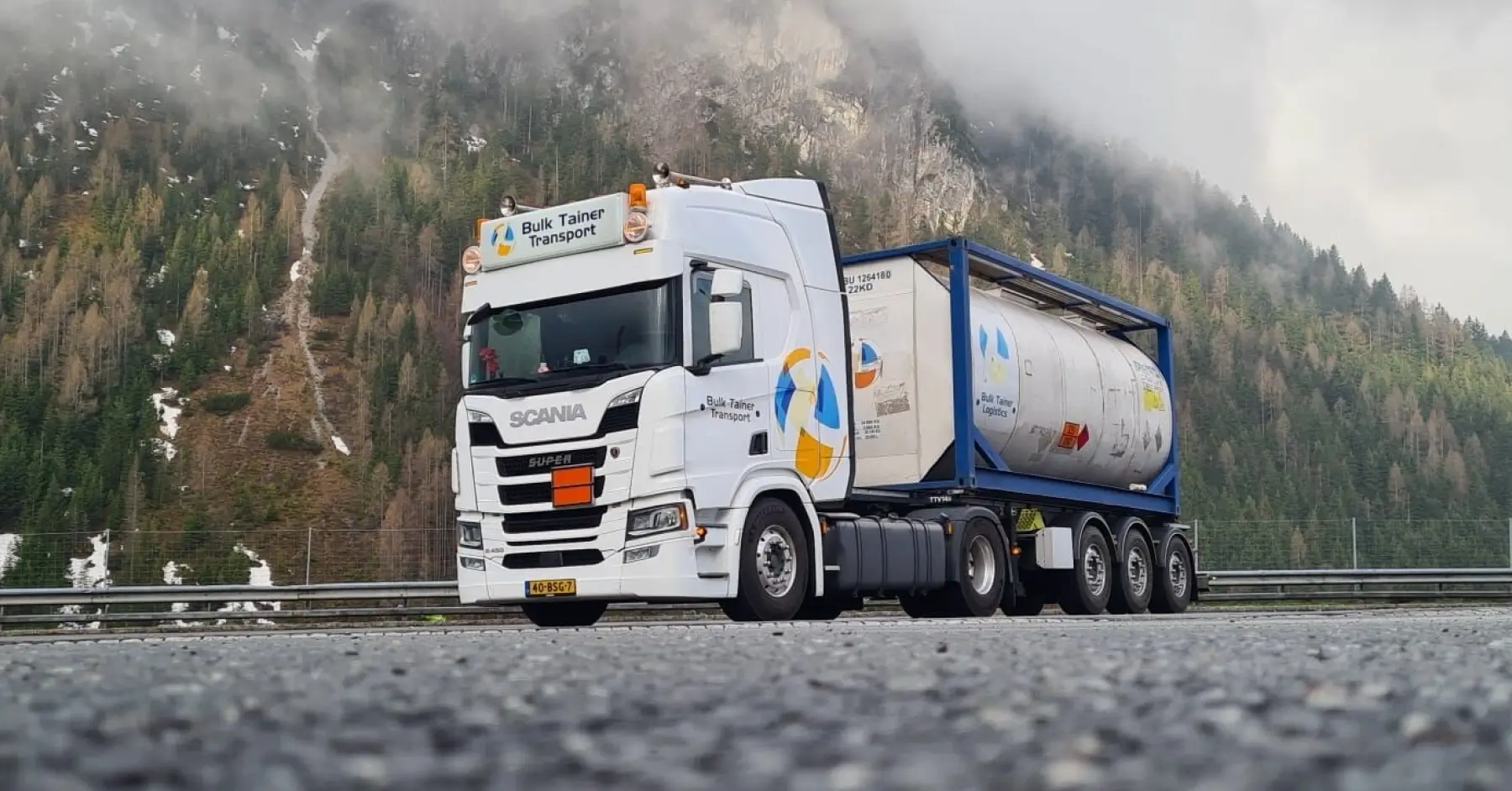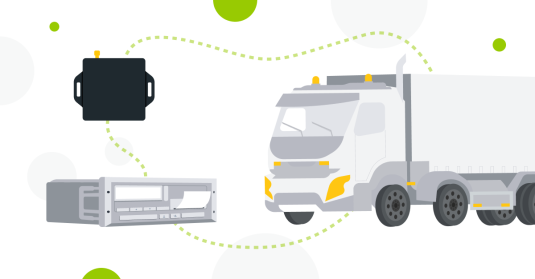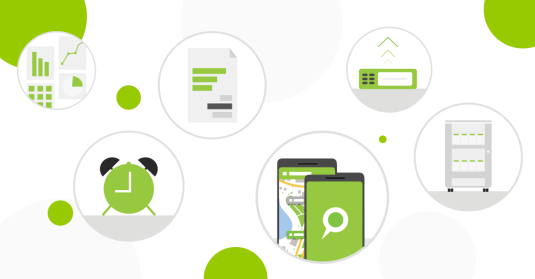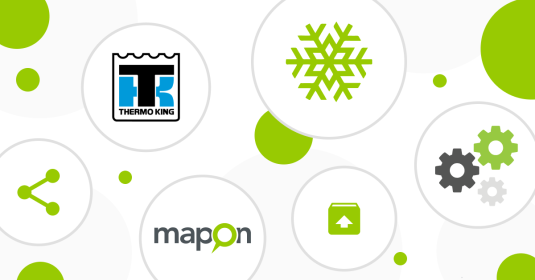Switzerland has been collecting performance-based tolls from truck fleets since 2001. The charge is called LSVA (Leistungsabhängige Schwerverkehrsabgabe), and it takes into account the actual kilometres driven, as well as vehicle weight and emissions class.
Like a dynasty of kings, it evolved into LSVA II, and now LSVA III. Find out what are the differences between second and third editions, and how to be 100% compliant from January 1, 2026!
How did LSVA II work?
LSVA II operated on a chip card system. Every vehicle had a physical card with identification information, such as gross weight, registration number, owner, etc. This card was inserted into a government-issued device (OBU) to record mileage accumulated on Swiss roads.
Once per month, the fleet company needed to submit the data from all the cards digitally or on-site. For foreign-registered trucks, it was a bit different if the vehicle didn’t have the government device. In that case, a common approach was for the driver to submit mileage data from odometer upon entering Switzerland, and then once again when leaving.
Although quite safe, the system wasn’t super practical, requiring manual work from all parties - fleet managers, drivers, and the toll authorities. That’s where LSVA III comes in.
How does LSVA III work?
The new system, in force from January 1, 2026, takes advantage of latest technologies to fully digitise the tolling process. Now, every truck is supposed to have a GPS tracking device. This can be, once again, a government-issued tracker, or one provided by a private company.
The device continuously records mileage via GPS tracking, and then submits the data either directly to FOCBS or to the service provider, which then transfers it to FOCBS. The drivers in most cases don’t need to do anything at any point, while fleet managers need to do a one-time setup, and then the occasional data quality monitoring. Invoicing is also automatic.
Did the toll amount change?
Broadly speaking, the formula how the tolls are calculated, remains the same. However, the costs may change because the mileage data will be collected in a different way (now purely with GPS tracking).
What do transport companies need to do?
The changes for you can be quite minimal or a bit larger depending on your current situation.
The truck traveling in and around Switzerland has to have a GPS tracking device to record mileage. If your vehicle has none at all, then the government can provide one for free (though there can be associated costs), sending data to the state provider NATRAS AG. The issue is that that’s literally all this setup does – help comply with Switzerland’s toll rules. You’ll get no other helpful insights from the tracking data.
If your company uses fleet management software and devices provided by the provider, there can be two situations. If that company is an approved NETS (National Electronic Toll Service) or EETS (European Electronic Toll Service) provider, then starting to provide data to Swiss authorities is trivially easy. You will need to enable the integration in your fleet management software (exact steps may vary).
However, if you already have fleet management software with devices, but it’s not a NETS or EETS provider, you’re back to square one. You’ll need another device that connects to an authorised private provider or NATRAS AG, the government solution.
Regardless of setup, your main touchpoint with LSVA III will be the Swiss ePortal – register in it if you haven’t already. Then, if you are using the government solution, you’ll need to fill out information about your trucks and trailers in the portal (gross weight, VIN, and so on).
For private providers, you need to fill out this data in your fleet management software. You might even have to do nothing if you maintained detailed records there previously.
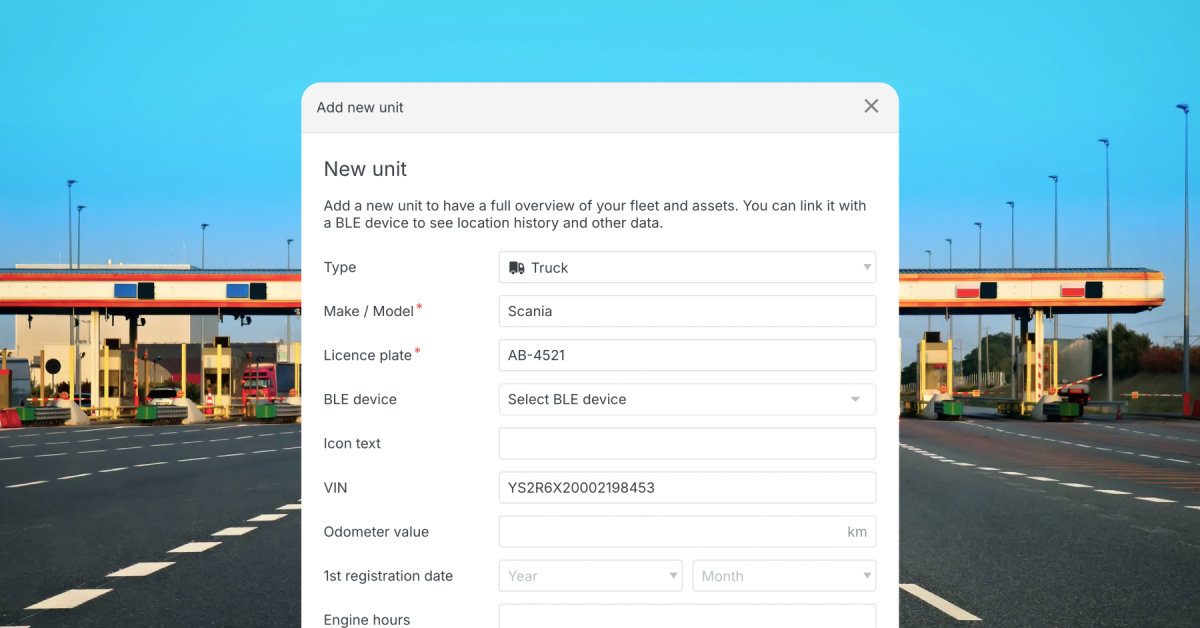
Don’t forget about trailers
Trailers are also included in LSVA III. In practical terms, this means whenever you send a mileage report to the authorities, it must contain information about the trailer that the truck was moving together with. This can achieved in three main ways:
- The driver chooses the trailer from a list of all company’s registered trailers as seen on the government’s tracking device. This must be done before the trip.
- The fleet manager does the same, but in the fleet management software if the company uses one.
- The truck and trailer are coupled together digitally, automatically. This setup needs tracking devices in both assets. The fleet management software detects the fact that the specific trailer and truck are nearby each other, among some other parameters. However, there are very few private systems that can do this – Mapon is one of them.
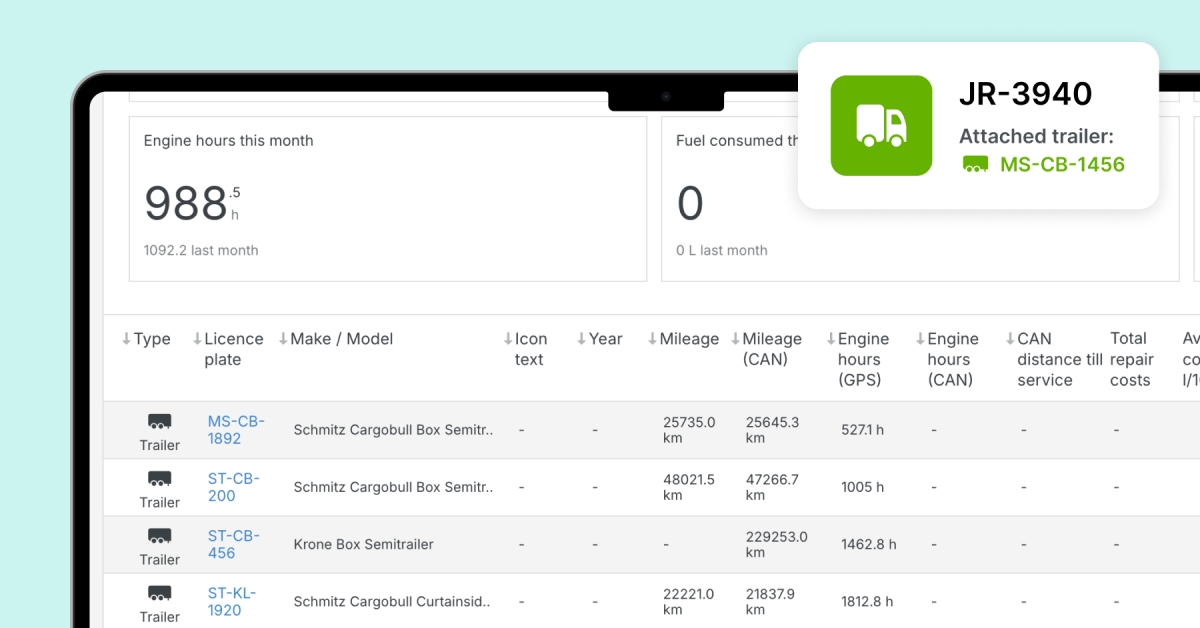
Mapon – approved NETS provider
Simply speaking, if you use our fleet management platform, fill out truck and trailer basic data, and have compatible devices installed, then spending time on Swiss toll road compliance will be a thing of the past!
We send data automatically daily about the previous calendar day, with the option to correct data manually. Our system supports truck-trailer auto-connection, meaning no more human errors and fines for incorrect coupling! The best part – the Mapon LSVA III integration is free for our clients.
Get a demo now!
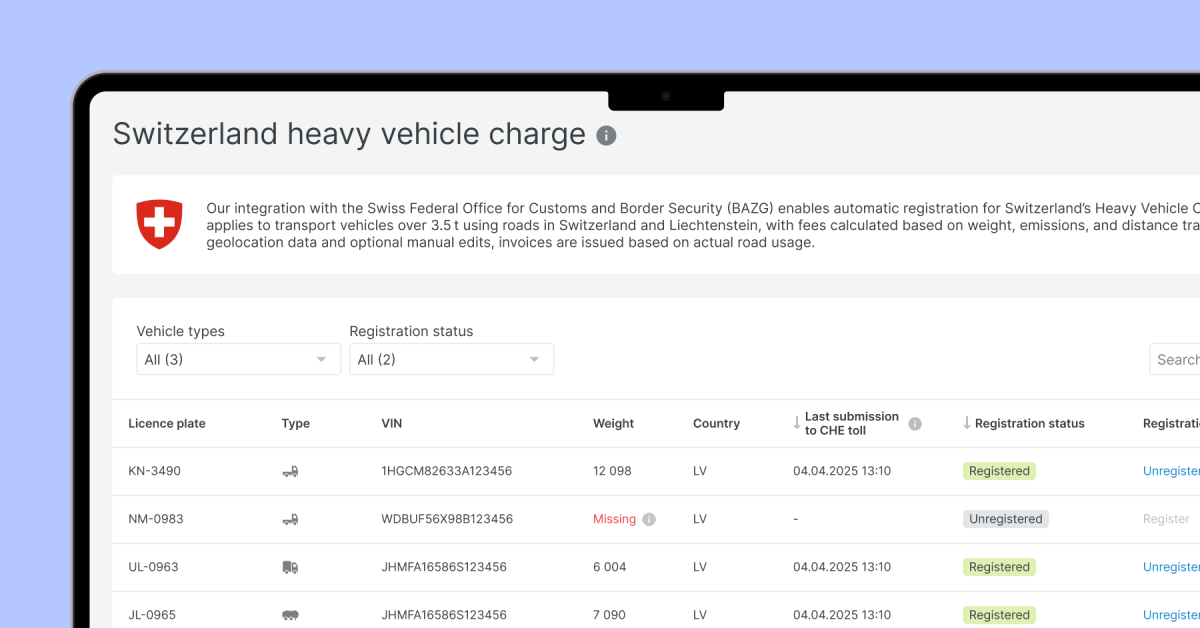


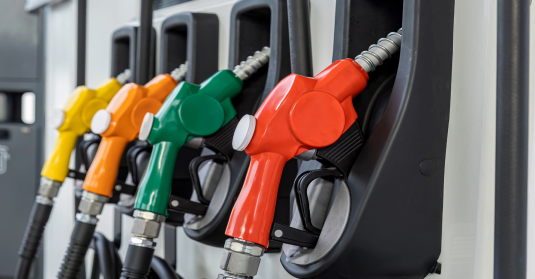






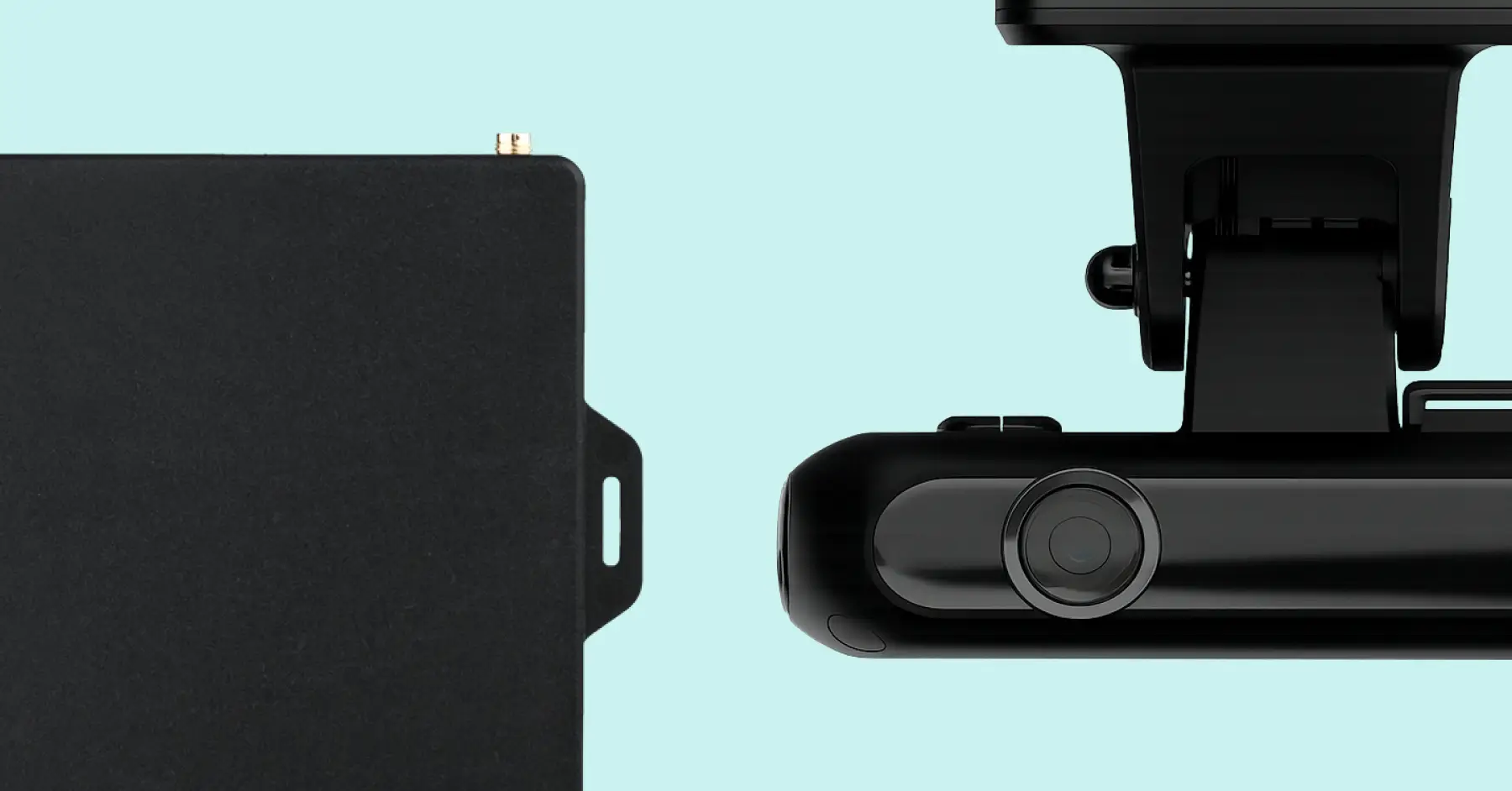


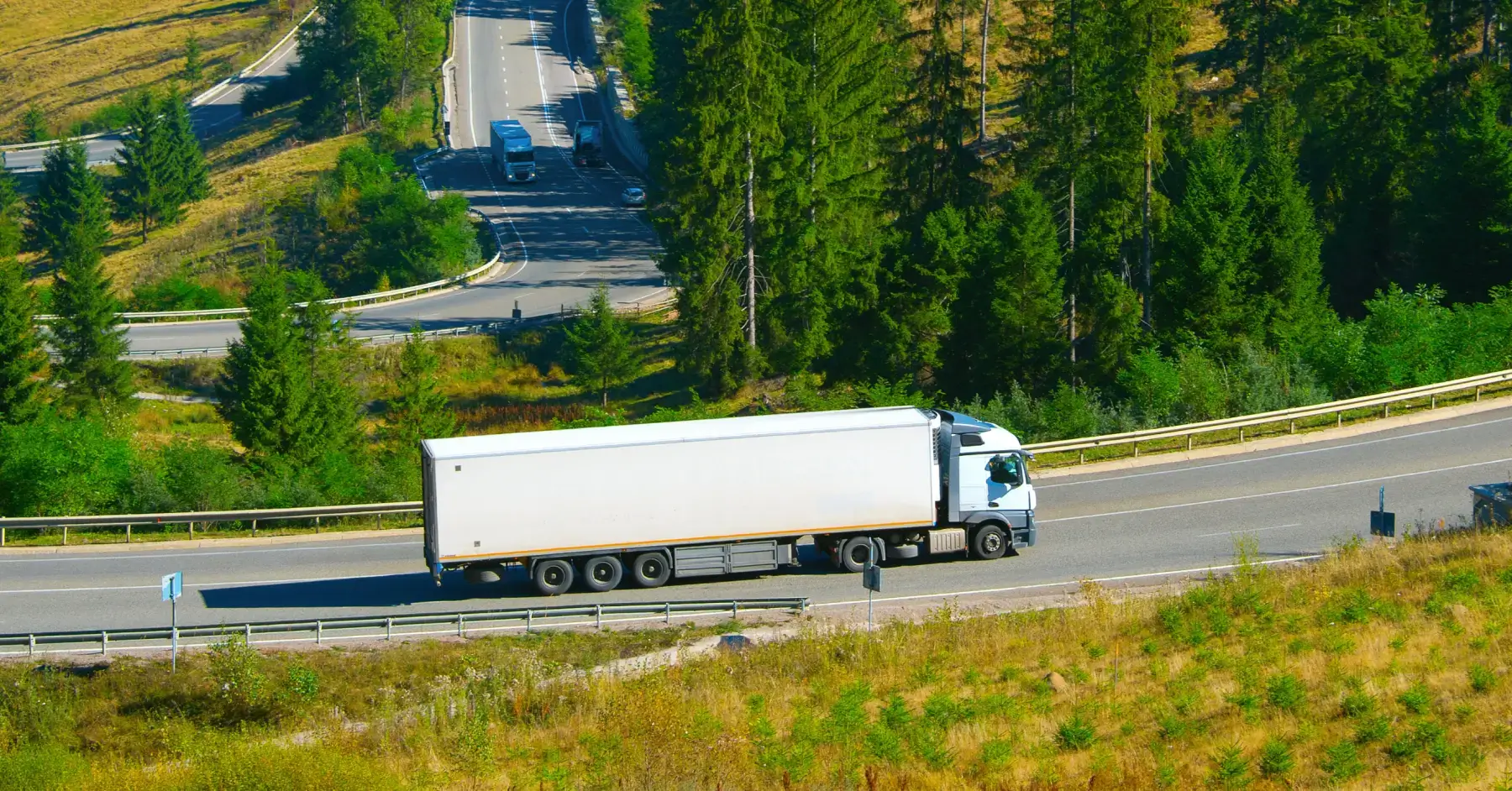


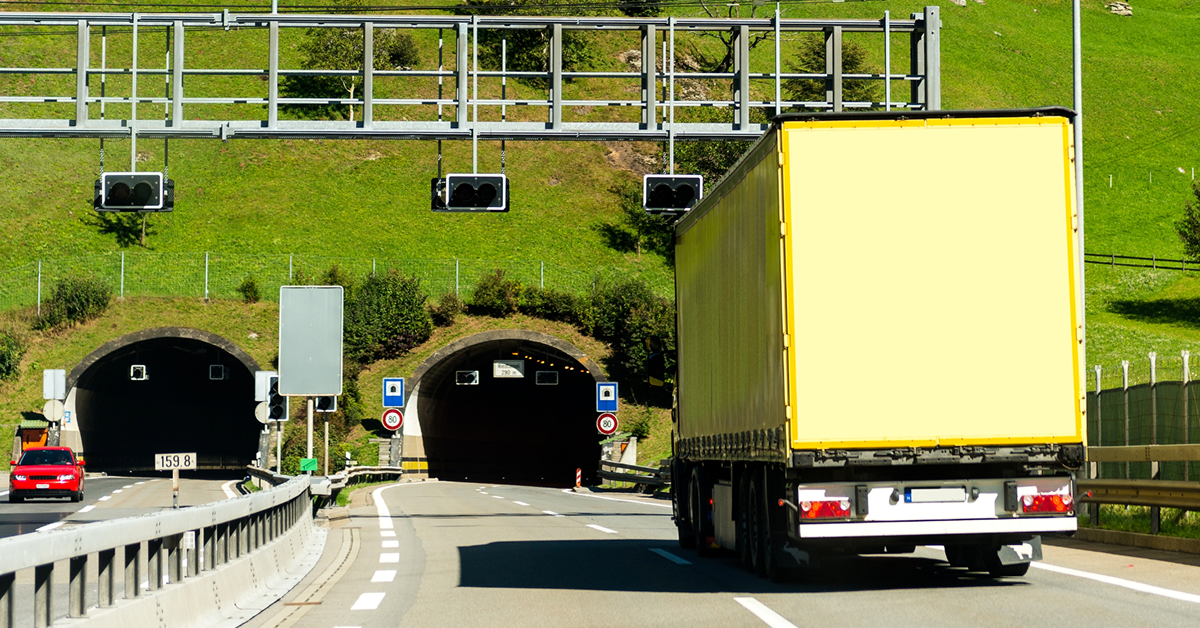
 Back to all posts
Back to all posts

